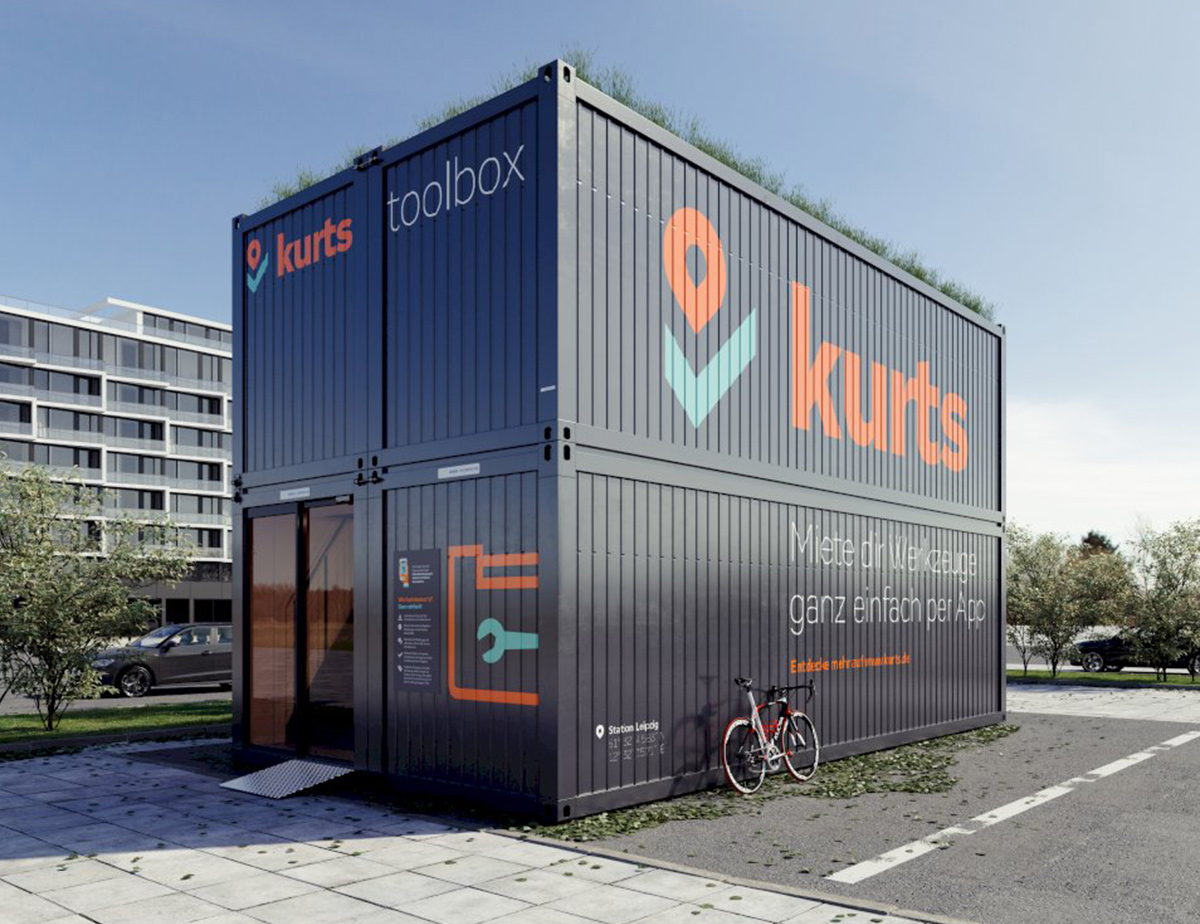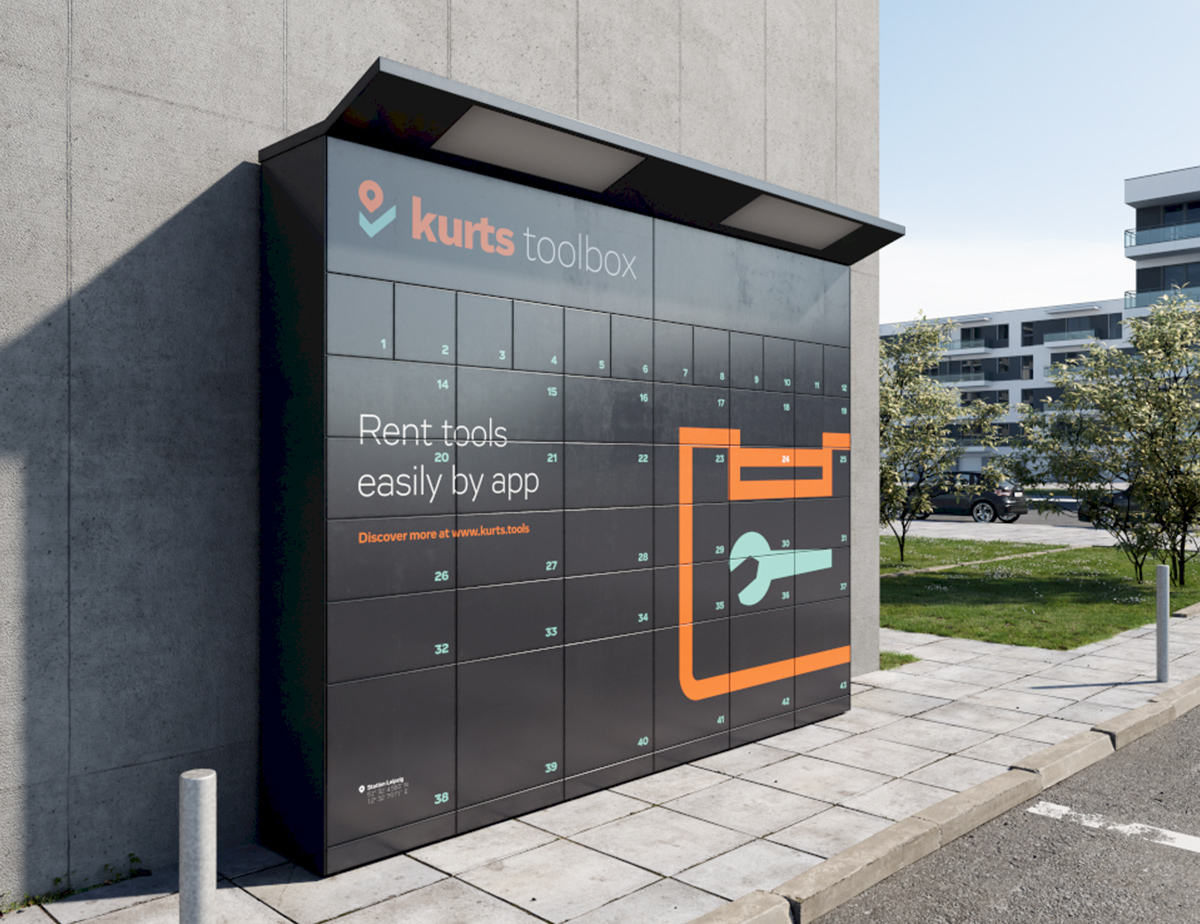Kurts toolbox: software meets hardware


How we digitized a locking system — and created a market first.
The whole thing started with a DM over YouTube. Our Technical Director Chris Figge has a how-to channel with a large subscription base, and one day a fan reached out and said he had a project he needed help with. Unlike usual, this message wasn’t from a tinkerer asking why the LED on his Arduino isn’t glowing, it was from someone at “Kurt König”.
König means “king” in German, and this indeed is a kingdom of sorts: a family-owned construction equipment company headquartered in Einbeck (Lower Saxony), and he was eager to bring digitalization into his business model. His idea was to create stations in shipping containers or free-standing locker systems where people could easily rent tools over an app, like drills, sanders, electric saws and so on. You could reserve, rent and pay for the tools with the click of the button, and the locker door would magically open and close when you came to the station to pick them.

But he’d run into a problem: he couldn’t find anyone who could connect the door locking system to the Internet. Since Figge’s videos made it clear he likes to build that kind of stuff, he decided to contact him to see if he could help.
At first I wasn’t sure we could do it, because hardware projects weren’t really our thing, but Figge was convinced we could. All we needed to do is attach an LTE router to a Raspberry Pi mini computer, which would in turn send requests to the IoT devices at the stations, enabling the user to lock or unlock the doors over the app. It sounded feasible, so we sent the company an offer and set up a meeting to talk things over.
Brimming with ideas, but not much else
When the guys from Kurt König came by, including the CEO Kurt König himself, we soon realized they had a business case as well as lots of sensible ideas for this locker rental system, which they planned to call kurts toolbox, but not much else. A developer from Eastern Europe was working on the platform, but they didn’t yet have anyone to create the actual stations.
They’d talked to the people who built the packing stations for Deutsche Post (the German postal service), but what they wanted to charge for a single station was what the König guys had budgeted for a set of five. So they thought, maybe we can just do this ourselves, and reached out to Figge because they knew he likes to build things.
That’s how we came to take over the technical aspects of the project onsite — and things had to move fast because Kurt König wanted to present the project in Barcelona at the World Mobile Congress, which was just six months away.
Banks can’t do it, but Arduino can
At first, we thought it was all just the matter of building a controller which is connected to an API, similar to a http request. This would then allow us to open a lock, or so went the theory.
However, we soon discovered the situation was more complicated than we thought. Fabian Schuster from Kurt König told me he’d talked to companies who build fireproof safety deposit boxes for banks for a hefty sum way over their budget and others that could only provide a simple on/off system. The locks we needed to make the system work simply didn’t exist on the market. So he asked me, can you add it to your project scope and build this locking system too?

At first we were a little bit freaked out — I mean, if banks couldn’t figure out how to do this, how could we? But Figge stayed cool and said let’s just get a handful of simple on/off 10 euro locks from China and attach them to Arduino, which will take over the
logic.
We tinkered with the locks on my kitchen table for a while, until we finally got the system to work. In the end, we had 16 locks we could control with the click of a mouse. Fabian and the guys from Kurt König headed off to Barcelona with the prototype in tow, which wowed at the congress.
Now it was time to get kurts toolbox off the ground for real.
The end? Not quite!
At this point, our job was done. We got the prototype to work, in time for Barcelona no less.
But then Fabian gave us a call and said that all went well, can we make them in a series now please? We had a laugh at first, because we’d literally welded the prototype together DIY-style by the seat of our pants. Once we got that out of our system, we told him if they got a professional electrician on board, we’d be happy to assist in the process.
Not long after, four gigantic boxes arrived at our office full of controllers like the simple wooden ones we’d built with Arduinos inside, only these ones were made of plastic and looked professional. We weren’t quite sure what to do with them, but then we got another call: Now it’s time to build the actual stations. Can you do it?
Once again, not exactly what we were expecting, but we jumped at the chance.
We turned the shed behind our office into a bonafide electronics workshop where we built around five large rental stations inside shipping containers and four city boxes, which are a smaller locker system, each designed to be plug and play.
Thus, kurts toolbox was officially born.
Where we go from here
Thanks to Arduino, we designed a locking system for kurts toolbox that can digitally open and close doors through a simple http request, all within a secure internal network — truly the first of its kind. Right now, you can only find their rental stations in Hamburg, but I believe they’re planning to open other locations in the future.

Either way, our part in their journey is now over.
It was a challenging project full of surprises, no doubt. But it also really showed us what we can do in terms of hardware, and it’s not something everyone can do by any means. That’s why I definitely plan to keep driving this side of our company forward in the future.
